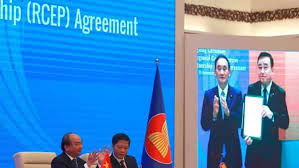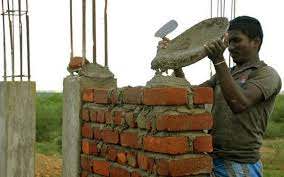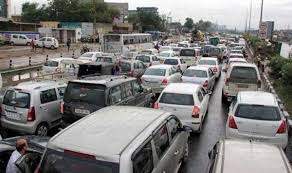
Regional Comprehensive Economic Partnership RCEP invited India to participate in the group’s activities as an observer member and left a window open for India to join in the future. Should India join RCEP?
Daily Current Affairs Quiz 2020
Key-Points
Fifteen countries of the region signed the mega RCEP trade pact which are Australia, Brunei, Cambodia, China, Indonesia, Japan, Laos, Malaysia, Myanmar, New Zealand, Philippines, Singapore, South Korea, Thailand, and Vietnam.
The RCEP now comprises the 10 Association of Southeast Asian Nations (Asean) nations, as well as Australia, China, Japan, South Korea and New Zealand.
As per the final provisions of the agreement, the RCEP agreement is open for accession by a country 18 months after its entry comes into force, although the agreement is open for accession by India as an original negotiating State from the date of its entry into force, without waiting for 18 months.
RCEP consists of 20 chapters, 17 annexes and 54 market access schedules. It includes chapters on trade in goods, services, investment, intellectual property, e-commerce, government procurement, MSMEs and economic cooperation.
Why India walked out of RCEP
India walked out of mega free trade agreement on November 4 last year as negotiations failed to address New Delhi’s outstanding issues and concerns, including a burgeoning trade deficit with China, despite being in negotiations for seven years. The reasons are explained below-
(i) Unfavourable Balance of Trade
Though trade has increased post-FTA with South Korea, ASEAN countries and Japan, imports have risen faster than exports from India.
According to a paper published by NITI Aayog, India has a bilateral trade deficit with most of the member countries of RCEP.
(ii) Dumping of Chinese Goods
India has already signed FTAs with all the countries of RCEP except China.
This is the major concern for India, as after signing RCEP cheaper products from China would have flooded the Indian market.
(iii) Non-acceptance of Auto-trigger Mechanism
In order to deal with the imminent rise in imports, India had been seeking an auto-trigger mechanism.
Auto-trigger Mechanism would have allowed India to raise tariffs on products in instances where imports cross a certain threshold.
However, other countries in the RCEP were against this proposal.
(iv) Protection of Domestic Industry
India had also reportedly expressed apprehensions on lowering and eliminating tariffs on several products like dairy, steel etc.
For instance, the dairy industry was expected to face stiff competition from Australia and New Zealand.
Currently, India’s average bound tariff for dairy products is on average 35%.
The RCEP binds countries to reduce that current level of tariffs to zero within the next 15 years.
(v) Lack of Consensus on Rules of Origin
India was concerned about a “possible circumvention” of rules of origin.
Rules of origin are the criteria used to determine the national source of a product.
Current provisions in the deal reportedly do not prevent countries from routing, through other countries, products on which India would maintain higher tariffs.
Implications of India’s Exit of RCEP
Exiting RCEP, India can still keep a check on China’s dumping of goods in India. However, from needles to the turbine, Chinese goods are all over the Indian market.
Refraining from RCEP will provide protection to the Indian domestic industry from cheap imports.
RCEP is a China-backed trade deal, signing it without India will further strengthen China’s economic power. It will affect India’s neighbourhood as China already tries to influence the region through its deep pockets.
India envisages becoming a manufacturing hub. However, staying out of the RCEP reduces opportunities for trading with these countries, which together account for roughly a third of global trade. Manufacturing today requires greater integration with global supply chains. Signing the agreement would have signalled an embrace of freer trade, which could have aided in the shift of companies out of China to India.
India’s exit of RCEP may also affect India’s Act East policy.
India should have used this as an opportunity to push through contentious but necessary reforms that would boost competitiveness.
Should India join RCEP?
Over the years, India has typically run a surplus in the trade of services, but a deficit in the trade of goods. These two, along with the receipt of income from investments and unilateral transfers, make up the current account balance of the country.
Fears of free trade deals widening trade deficits are not new. Based on an ex-ante analysis of India’s FTA with Asean, several studies had concluded that India’s allocative efficiency would increase, but the terms of trade would continue to weigh against us.
However, studies based on ex-post analysis concluded that after that FTA, India’s exports to Asean countries increased substantially, with the largest access gained in Thailand, Cambodia, Vietnam, Malaysia, and the Philippines.
India’s FTAs with Japan, Asean and South Korea are among its biggest such deals. In the case of Japan, after the implementation of the agreement, India has mostly imported industrial supplies, capital goods and transport equipment. These are predominantly used as intermediate goods and have thus helped India improve productive capacity and employment generation. India ran a trade deficit of $7.9 billion with Japan in 2018-19, but these gains cannot be overlooked.
Moreover, on average, India’s exports to FTA partner countries have seen an increase of 15% after an agreement is signed, a sharper incline than that for non-partner countries.
In the final analysis, it is important for India to continue to import intermediate goods at internationally competitive prices. To this end, it needs to integrate itself with global value chains. Participating in FTAs is essential in this regard.
India need to focus on the composition of imports, the possibility of exports, and concurrent employment opportunities created under FTAs, rather than unnecessarily worrying about import deluges and irrelevant trade deficits. India should get back into RCEP without fear.





